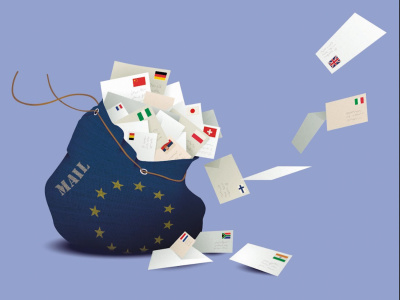True: trade can bring about development. But the path from trade to inclusive and sustainable growth, and ultimately to development, can be a tortuous one, full of obstacles and pitfalls. Moreover, in the words of Dani Rodrik, if there is one economics, there are many recipes. As recently recognized by the World Bank, the required development approach is “one that pays attention to contextual variations and uncertain trajectories of change”. This implies that trade and other economic reforms must be tailor-made to the specific conditions and characteristics of the country or region where they are undertaken.
What does this mean in practice? First, trade cannot be seen as a stand-alone policy. It must be embedded into a broader development strategy and agenda for inclusive and sustainable growth. Second, political leadership and domestic ownership are key. Too often, these are lacking, leading to half-hearted, poorly conceived and implemented reforms. Third, an evidence-based approach must be followed, which requires adequate transparency and proper monitoring.
While these principles are well recognized by the international community and in some countries, their effective implementation remains a challenge. The collection of articles in this issue of GREAT Insights illustrates some of these.
Consider the international commitment to strengthen the linkages between trade and development. The European Union (EU) has traditionally been at the forefront of such endeavour, notably in the framework of its long-lasting partnership with the African, Caribbean and Pacific (ACP) group of countries, and more recently on the aid-for-trade (AfT) agenda. Yet, the EU seems to draw surprisingly little lessons from its rich experience.
A revealing case in this regard is perhaps the seemingly never-ending negotiations on economic partnership agreements (EPAs), started 10 years ago. The aim appeared noble: to address in a comprehensive package inter-related trade and economic issues for development. The reality is that few in Africa and the Pacific have bought in an agenda mainly driven by the EU. With a few exceptions, the main reason for most countries to continue negotiating is to maintain a preferential access to the EU market, as well as preserve unity in their regional integration processes. The price to pay: to open up their market to EU goods (for many, as little as possible) and to subscribe to a number of related rules requested by the EU (for many, in the most flexible way possible).
While the European Commission has officially recognized some of the problems a couple of years ago, there is no lessons drawn in its recent Communication on Trade, Growth and Development. Instead, it is seeking to impose some kind of deadline, by 2014. The ACP Group, NGOs, and the International Trade Committee of the European Parliament call for an extension of the deadline. This may however simply be a distraction from the real issue. In most cases, imposing trade rules will not work for development. A consensus based on joint ownership should rather be found. The EU should be transparent about how it will articulate in EPAs its new strategy to differentiation. In particular, it should make public the flexibility it intends to provide to address key remaining concerns of African negotiators. By the same token, African and Pacific leaders should make clear their stance on EPAs, list their demands and walk out of the negotiations if not genuinely interested. After 10 years of negotiations, time is no longer of the essence; political leadership is.
The EU can be a great ally to developing countries in better linking trade to development objectives. For this, it must show greater understanding, flexibility and coherence in its actions. But the onus lies primarily on developing countries to determine their own path to equitable and sustainable development, and engage their partners (in the North as well as in the South) accordingly.
San Bilal is Head of Economic Governance Programme and Policy Officer Trade & Economic Governance at ECDPM
This article was published in GREAT Insights Volume 1, Issue 6 (August 2012)



